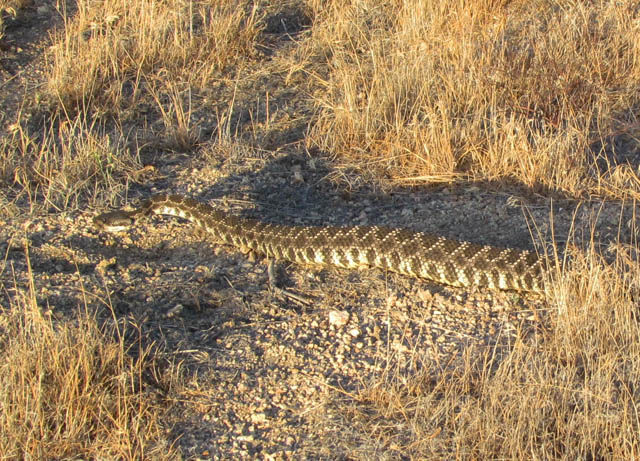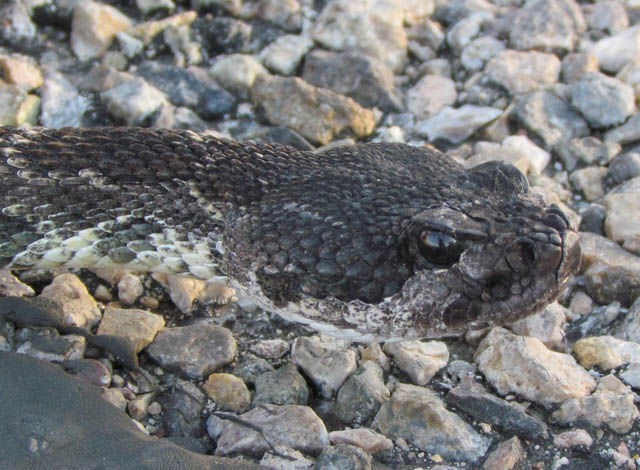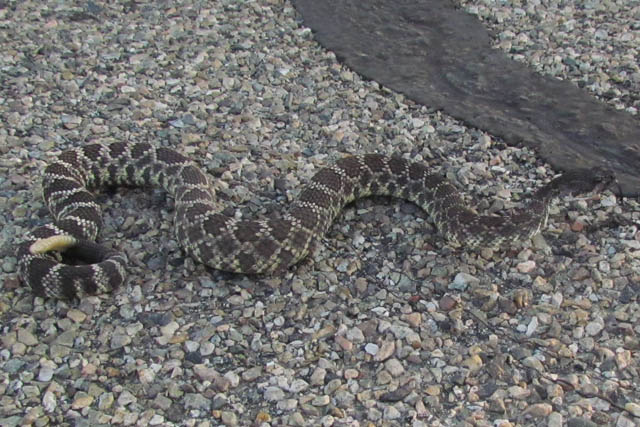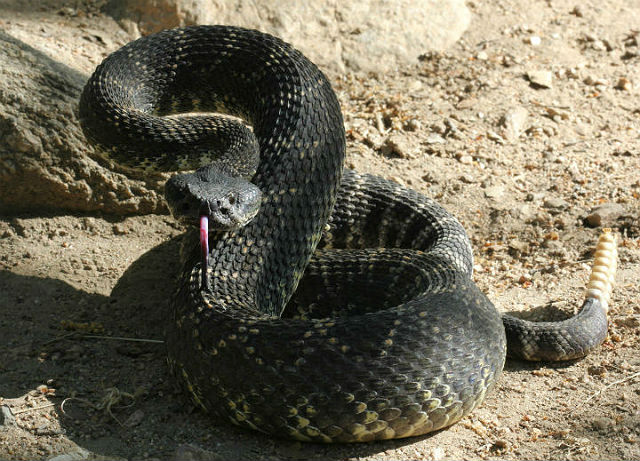This is a serpent that I have occasionally come across while visiting southern California. The Southern Pacific Rattlesnake is one of nine subspecies of Western Rattlesnakes, which range across much of the western United States, Mexico and Canada. Adults are usually three to four feet long.
Like other species of Western Rattlesnakes, the Southern Pacific has a relatively hefty body and stubby tail, a triangle-shaped head, hooded eyes and elliptical pupils. It often blends into its surroundings due to its coloration. Although usually brown to olive-brown, it may be gray or a greenish tint. A thin brown, grey, or black stripe extends from the corner of each eye to the mouth.
Like not only rattlesnakes, but also like Cottonmouths and Copperheads, it has a small opening, or heat-sensing organ called a loreal pit, on each side of its face, between its nostrils and eyes, giving it membership in the subfamily called “Pit Vipers.” Much of our current-day technological advances in night vision and heat seeking ability are a result, in part of research done on pit vipers such as the Southern Pacific Rattlesnake.
These rattlesnakes live in a variety of areas including grasslands, mountain forests, coastal dunes, rocky deserts and hillsides and agricultural fields. Young snakes feed mostly on small lizards, while adults usually eat small mammals and birds. Rattlesnakes tend to be nocturnal hunters. These reptiles use venom to subdue their prey. The venom of the Southern Pacific Rattlesnake varies substantially between populations likely depending on habitat. In certain areas it has developed neurotoxic venom.
The rattle at the end of the tail of the Southern Pacific Rattlesnake is made up of segments of keratin (similar to what makes up fingernails). When the snake sheds its skin, a new segment of the rattle is formed. The rattle warns other animals the snake is venomous and can and will defend itself. This is always an impressive and memorable beast to encounter in the field.





